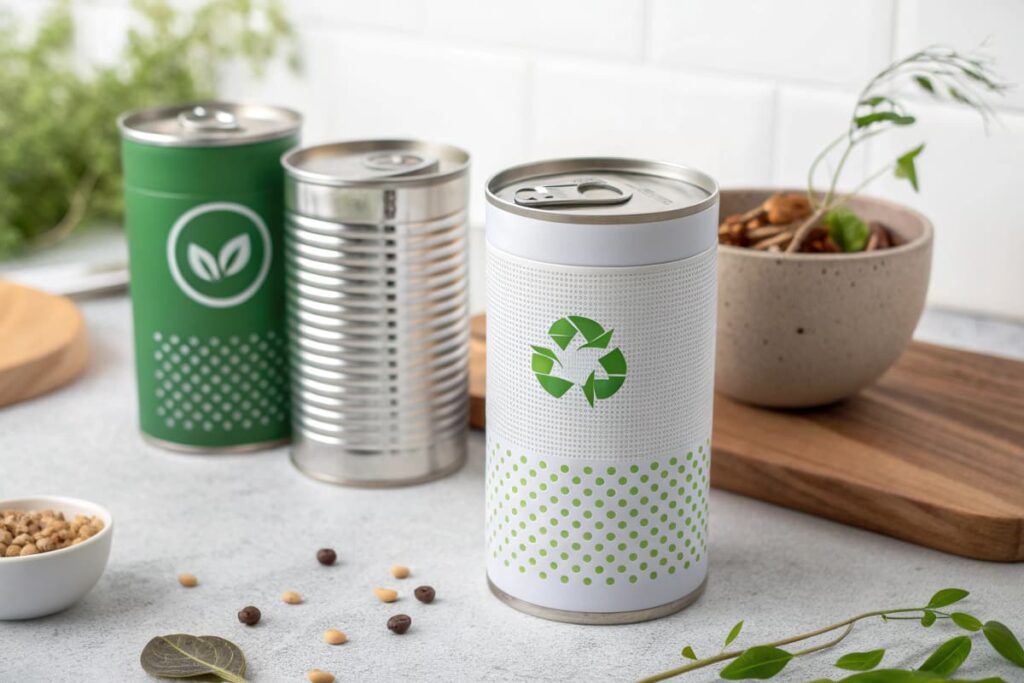In every household kitchen and artisanal workshop around the world, the humble can quietly embodies a powerful story-one of preservation, convenience, and environmental responsibility. Beyond simply holding food or beverages, a can represents a centuries-old tradition of safeguarding the harvest, extending shelf life, and ensuring nourishment reaches those who need it most. It is a vessel of ingenuity, allowing families to store seasonal fruits and vegetables, craft brews, or homemade sauces, all while reducing waste and making resources go further. At the Green Canning Foundation, we see cans and canning as far more than practical containers; they are catalysts for sustainable living, community resilience, and conscious consumption. Each can tells a story of resourcefulness and care, linking generations through shared knowledge, promoting environmentally responsible habits, and offering communities a tangible way to participate in a circular economy. By embracing canning, households and small producers alike can make everyday choices that directly support a healthier planet, turning a simple kitchen tool into a symbol of empowerment and ecological stewardship.
Why Cans Deserve a Second Look
Cans often face criticism in mainstream conversations about packaging, but their credentials-especially when recycled-are impressive:
- Durable and transport-friendly: Unlike fragile glass, cans resist breaking, making transportation safer and more energy-efficient.
- Superior barrier performance: Metal is impervious to light, air, and moisture, keeping contents fresher, safer, and tastier for longer.
- Highly recyclable: Aluminum, in particular, can be recycled indefinitely with minimal quality loss, significantly reducing raw material extraction.
- Lightweight: Lower weight translates directly into reduced carbon emissions across the supply chain.
- Full branding potential: Cans offer a seamless 360° printable surface, creating dynamic marketing and storytelling opportunities.
Taken together, these factors position cans as a powerful ally in the fight against waste and inefficiency. By championing cans, Green Canning supports practical, scalable solutions that benefit both people and the planet.
The Art and Science of Canning-Home and Small-Scale
Canning isn’t just about preserving-it’s a craft, a skill, and a tradition reimagined for today’s sustainability-minded world.
1. Home Canning: A Legacy of Resilience
Generations have tapped into cans and jars as reliable tools to safeguard seasonal harvests, guard food supplies, and minimize waste. Green Canning intends to revive these traditions-blending them with modern best practices to ensure safety, efficiency, and ecological harmony. Workshops and online guides help households learn proven techniques while prioritizing accessible, eco-conscious practices.
2. Craft and Micro-Scale Canning: Quality Meets Sustainability
Microbreweries, cold brew cafés, small food startups-they all benefit from canning in unique ways:
- Consistency and freshness: Metal cans preserve flavors, carbonation, and moisture levels with exceptional fidelity.
- Market-ready packaging: Whether you’re selling kombucha or chili, cans elevate product presentation and prolong shelf life.
- Local production, global impact: Small businesses can package locally, reducing shipping weight and emissions while promoting circular practices.
These benefits mirror Green Canning’s mission-empowering communities to thrive in ways that respect environmental boundaries.
A Practical Innovation: Compact Canning Tools
Within the landscape of sustainable canning, access to right-sized tools is key. For many craft producers and home-based entrepreneurs, full-scale automated lines are beyond reach. That’s why efficient, manual-first equipment plays such a transformative role. One example of this shift stems from companies offering compact, food-grade filling and seaming machines. Built for versatility, hygiene, and ease of use, these tools allow small-scale makers to harness the benefits of cans without prohibitive costs or industrial setups. These innovations reinforce Green Canning’s message: sustainability isn’t just for big companies. With the right tools, anyone-from a café owner to a backyard brewer-can package in ways that honor both craft and conservation.
A Subtle Spotlight: Innovation in Action
An example of such accessible innovation comes from a company Eazy Canning developing manual can-filling and seaming equipment tailored to micro and small producers. Their machines are designed with thoughtful attention to materials and performance: food-grade stainless steel, compact form, and safety-certified operation. They accommodate cans from roughly 200 to 1,000 milliliters and streamline the transition from creation to packaged product. By enabling local makers to can efficiently and confidently, these tools quietly advance the ideals we champion at Green Canning: quality, sustainability, and community empowerment-all wrapped in recyclable packaging.
How Cans and Canning Advance Green Canning’s Mission
- Closing the Loop
By encouraging recyclable packaging, we support a circular economy where materials remain in the system, rather than becoming waste.
- Preserving Ideas, Not Just Food
Home canning workshops and craft canning initiatives teach more than technique-they foster resilience, intergenerational knowledge, and local entrepreneurship.
- Lowering Environmental Impact
Lighter, more durable cans reduce shipping emissions. Recycling them saves significant energy compared to producing new metal.
- Accessible Sustainability
From beginner kits to semi-manual pro tools, canning solutions are increasingly affordable and space-efficient-allowing people from all walks of life to participate.
- Community Building
Canning brings people together-whether in shared preservation sessions, taproom gatherings, or online recipe swaps. Packaging becomes a connector, not a constraint.
The Can as a Symbol of Hope
In modern sustainable discourse, cans often go unnoticed-hidden behind labels or taken for granted. Yet within their metal shell lies a story of preservation, efficiency, and circularity. At the Green Canning Foundation, we imagine a world where cans are embraced, not avoided; where canning isn’t a relic but a renaissance-empowering homes, cafés, and craft makers to steward resources, build community, and reduce waste. Tools that help make canning easy and accessible-like the mentioned manual filling and seaming equipment-aren’t just gadgets. They’re enablers of possibility, linking tradition with technology, and craft with conservation. So lift that can. Let it remind you: sustainability starts small and can be recycled, one can at a time.

